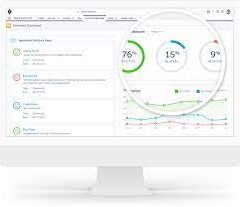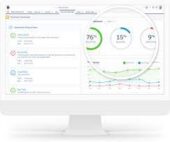Predictive Analytics in Salesforce: Enhancing Decision-Making with AI
In an ever-changing business environment, companies seek tools to forecast trends and anticipate challenges, enabling them to remain competitive. Predictive analytics, powered by Salesforce’s AI capabilities, offers a cutting-edge solution for these needs. In this guide, we’ll explore how predictive analytics works and how Salesforce empowers businesses to make smarter, data-driven decisions.
What is Predictive Analytics?
Predictive analytics uses historical data, statistical modeling, and machine learning to forecast future outcomes. With the vast amount of data organizations generate—ranging from transaction logs to multimedia—unifying this information can be challenging due to data silos. These silos hinder the development of accurate predictive models and limit Salesforce’s ability to deliver actionable insights. The result? Missed opportunities, inefficiencies, and impersonal customer experiences.
When organizations implement proper integrations and data management practices, predictive analytics can harness this data to uncover patterns and predict future events. Techniques such as logistic regression, linear regression, neural networks, and decision trees help businesses gain actionable insights that enhance planning and decision-making.
Einstein Prediction Builder
A key component of the Salesforce Einstein Suite, Einstein Prediction Builder enables users to create custom AI models with minimal coding or data science expertise. Using in-house data, businesses can anticipate trends, forecast customer behavior, and predict outcomes with tailored precision.
Key Features of Einstein Prediction Builder
- Custom Predictions: Build models specific to your business, such as forecasting sales or calculating the likelihood of customer churn.
- Explainability: Provides transparency into how predictions are made, enabling teams to trust and act on the insights.
- Automation: Integrate predictions with Process Builder or Einstein Next Best Action to trigger timely business activities.
- Timely Insights: Identify patterns and trends not immediately visible, empowering proactive planning.
Note: Einstein Prediction Builder requires an Enterprise or Unlimited Edition subscription to access.
Predictive Model Types in Salesforce
Salesforce employs various predictive models tailored to specific needs:
- Random Forest:
- A supervised learning algorithm that builds a “forest” of decision trees, improving accuracy through ensemble learning.
- Ideal for both classification and regression tasks.
- Logistic Regression:
- Estimates the probability of an event, making it useful for binary classifications (e.g., will a lead convert?).
- Linear Regression:
- Models relationships between variables to predict numeric outcomes (e.g., quarterly sales forecasts).
Building Custom Predictions
Salesforce supports custom predictions tailored to unique business needs, such as forecasting regional sales or calculating appointment attendance rates.
Tips for Building Predictions
- Data Segmentation: Focus predictions on specific subsets of data, like geographic regions or customer segments.
- Data Checker: Ensure data quality meets requirements for accurate predictions. Adjust settings or input additional data if necessary.
- Opportunity Scoring: Assess the likelihood of deals closing using Salesforce’s scoring models, supplemented by anonymous global data if needed.
Prescriptive Analytics: Turning Predictions into Actions
Predictive insights are only as valuable as the actions they inspire. Einstein Next Best Action bridges this gap by providing context-specific recommendations based on predictions.
How Einstein Next Best Action Works
- Uses strategies defined by business rules to deliver relevant recommendations (e.g., offering discounts to loyal customers or upselling premium services).
- Automates actions based on prediction outcomes, saving time and improving decision-making efficiency.
Data Quality: The Foundation of Accurate Predictions
The effectiveness of predictive analytics depends on the quality of your data. Poor data—whether due to errors, duplicates, or inconsistencies—can skew results and undermine trust.
Best Practices for Data Quality
- Ensure Accuracy: Data must reflect reality to support reliable predictions.
- Eliminate Duplicates: Minimize duplicate records to maintain data integrity.
- Use Consistent Identifiers: Merge records accurately across systems for a unified view.
Modern tools like DataGroomr can automate data validation and cleaning, ensuring that predictions are based on trustworthy information.
Empowering Smarter Decisions with Predictive Analytics
Salesforce’s AI-driven predictive analytics transforms decision-making by providing actionable insights from historical data. Businesses can anticipate trends, improve operational efficiency, and deliver personalized customer experiences. As predictive analytics continues to evolve, companies leveraging these tools will gain a competitive edge in an increasingly dynamic marketplace.
Embrace the power of predictive analytics in Salesforce to make faster, more strategic decisions and drive sustained success.
🔔🔔 Follow us on LinkedIn 🔔🔔













